Spring 2020: A Closer Look at Felton

I’m quarantined with my husband and our kids (who are 8 and 5), here in the Bay Area (I live in a small town about an hour south of San Francisco). The last month has been pretty zany, as we’ve tried to figure out how to handle distance learning for the kiddos, both of our work schedules, etc., but we’re fumbling our way through it. We’re feeling super fortunate to be healthy and that the weather has mostly cooperated: perhaps one of the truest signs that I’ve become a Californian for real is that I’m increasingly despondent when it rains.
This is not unusual or surprising, but the time issues and the pervasive sense of uncertainty have been the big changes in my life as a designer over the past month (and that we’ve been focused on getting the Spring collection out, so I’ve been in more “editing mode” than “designing mode” of late), so I haven’t been tackling a lot of out-of-the-box projects right now. But I’ve been doing some design research for Fall 2020, knitting from some other people’s patterns (which I haven’t done in ages), and looking for that balance between the kinds of textures and cables I’m most captivated by and the kind of meditative, intuitive knitting I think we all want to be doing right now.

Felton features your signature “very Sloane cables” (I’m trademarking that!) with delicious texture and ribbing. What was your inspiration for the design?
These days, more and more of my inspiration comes from the world of ready-to-wear: I’m looking at sweaters and knitted textures as they exist in the world of “real” fashion and thinking about how to adapt them for handknitting. I’m thinking about the staple silhouettes and garments in my actual wardrobe — or more accurately, the kinds of garments I wish were in my wardrobe, since finding high-quality, affordable knitwear in anything other than plain stockinette fabric is pretty challenging — and which of those kinds of sweaters make sense to knit, and what my ideal “knitterly” version of them is. Because I’m primarily a garment designer, I’m also always thinking about trying to balance visual and knitterly interest with producing a garment that’s going to drape nicely on an actual body, and I find that building cable charts out of sequential, “multi-step” cables (where you’re crossing one or two stitches at a time, rather than dramatically folding the fabric for a bigger cable) tend to help with that balance.
Open-front, low-hip length cardigans are part of my wardrobe bread-and-butter: I live in a place where it is always the right temperature for a sweater for a few hours, but not usually the whole day, so I live in layers, especially in warmer seasons. When I sat down to design Felton, I was looking at a way to add texture and cabling to that kind of silhouette, and as I was pinterest trolling, found a cable panel on the back of a sweater that I couldn’t get out of my head. I figured out how to recreate something very similar using my favorite cables, and off I went.

Tell us a bit about the details? The tailoring, construction, shaping? And why you chose these finer details?
Felton is knit from the bottom up, in pieces, and seamed (about which, more later), using a tailored or full-fashioned shoulder (about which more later, as well!). The sweater hits at low-hip, but isn’t quite tunic length, and has about 5” of A-line shaping from bust to hip. For most people, this gives you a sweater that has about the same amount of functional ease at hip and bust: most of us are a bit wider at the hip than the bustline, so to get the same 6-8” of ease you’re aiming for at the bustline, you need to grade out a bit as you get to the hips. You also don’t want this kind of cardigan to pinch at the hips, so you’re adding a bit of extra width there.
One of the big fit decisions I made here was actually about the front bands, which are substantial (and include both the cable panel and the ribbing). I wanted an integrated band (in part out of mercy to the knitter—picking up stitches to work a shawl collar on a long cardigan can be quite a process), but I wanted the cardigan to be able to really close across your body and be cozy and warm, rather than more of a “duster” style silhouette that wouldn’t close at the fronts. So, combined width of the fronts (including the bands) is a little more than the back measurement, which gives you a little room to overlap the bands (and maybe even pin them with a shawl pin) if you’d like.
Tell us more about full-fashioned shoulders, and why they are your set-in sleeve go-to?
Can I cheat and quote myself on this one? I wrote a very long blog post on my personal blog last winter about why tailored shoulders are really great, ranging from “I think they produce more predictable, easier-to-work armholes” to “I just think they look pretty,” and I’d stand by all of those reasons. In a sweater with tailored shoulders, essentially you work the back to the height of the sleeve cap and then work double decreases to the neck width, and then attach the tops of your fronts to those sloped edges. For a variety of reasons (including some basic math), this produces an armhole that seams with considerably less difficulty and fuss, and, more importantly, an armhole that you can *know* will seam with minimal difficulty and fuss. When you combine the fit advantages with the ease-of-use issues, it feels like a slam dunk to me.

Why is “Team Seam” essential for this type of garment?
As designers, we’re always trying to balance what we think will be easiest and most user-friendly for knitters with what’s necessary to achieve the kind of drape or fit or structural integrity and durability we’re aiming for in a given garment. Here, I think those factors actually both point in favor of seamed construction: there’s just a lot of knitting here. It’s a big sweater, it’s got cables on most of the right side rows on all the pieces, and even though Forge is a beautifully light yarn for its weight, given the length and the amount of texture involved, there’s still just a lot of physical weight hanging off of your shoulders. Seams help support the weight of the sweater and ensure that it will still hang beautifully off your shoulders years from now, which is everybody’s goal. If you were violently opposed to setting in sleeve caps, I’d recommend you knit the body in pieces and seam it together, and then pick up the sleeves and knit down, using short rows to shape the sleeve caps, so you’d still have the structural benefits of seams at the shoulders.
Do we have more cabled garments to look forward to in the future? Can you give us a little glimpse into your plans for A/W 2020?
Of course! We’re deeply in the planning stages for A/W 2020, but I’ve had a cabled pullover in Forge on the brain since last fall that I think is finally going to make an appearance. Hats are also a definite possibility.
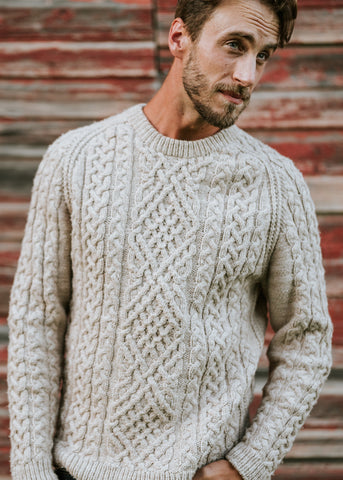
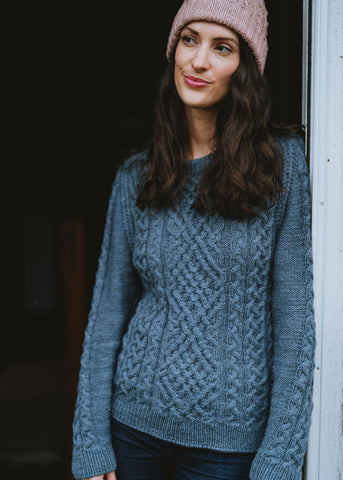
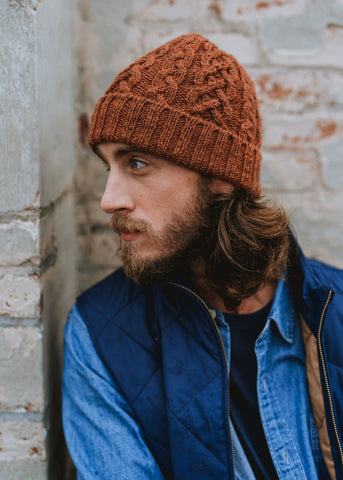

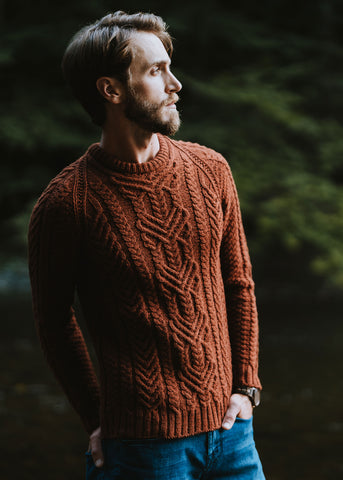
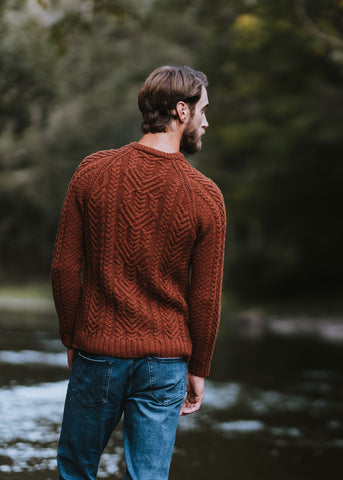




This is not a normal post that you see every day on the internet where people give fake reviews and false information about excellent financial assistance. I am aware that many of you have been scammed and that fake agents have taken advantage of those seeking loans. I will not call these normal reviews, I will call this situation where I live a witness to how you can get your loan when you meet the company’s requirements. It really does not matter if you have a good credit rating or government approval, all you need is a proper ID card and a valid IBAN number to be able to apply for a loan with an interest rate of 3%. The minimum amount is 1000 euros and the maximum amount that can be borrowed is 100,000,000 euros. I give you a 100% guarantee that you can get your loan through this reliable and honest company, we operate 24 hours online and provide loans to all citizens of Europe and outside Europe. They sent me a document that was checked and tested before I got the loan, so I invite anyone who needs a loan to visit them or contact them via email: michaelgardloanoffice@gmail.com
WhatsApp for Europe: +38591560870
WhatsApp for USA: +1 (717) 826-3251
After you contact them, let them know that Mrs. Dejana Ivica from Zagreb gave you the information. Seeing is believing and you will thank me later when you get a loan from them. I made a promise that after I get a loan from them, I will post the good news to everyone online. If you have friends or relatives, including colleagues, you can tell them about this offer and that it is happening this CHRISTMAS TIME.
This is not a normal post that you see every day on the internet where people give fake testimonials and false information about great financial assistance. I am aware that many of you have been scammed and that fake agents have taken advantage of those seeking loans. I will not call this a normal testimonial, I will call this a situation where I am a living witness of how you can get your loan when you meet the terms and conditions of the company. It really does not matter if you have a good credit rating or government approval, all you need is a valid ID card and a valid IBAN number to be able to apply for a loan with an interest rate of 3%. The minimum amount is 1000 euros and the maximum amount that can be borrowed is 100,000,000 euros. I give you a 100% guarantee that you can get your loan through this reliable and honest company, they operate 24 hours online and provide loans to all citizens of Europe and outside Europe. They sent me a document that was checked and tested before I got the loan, so I invite anyone who needs a loan to visit them or contact them via email: michaelgardloanoffice@gmail.com
WhatsApp for Europe: +38591560870
WhatsApp for USA: +1 (717) 826-3251
After contacting them, let them know that Mrs. Dejana Ivica from Zagreb gave you the information. Seeing is believing and you will thank me later when you get a loan from them. I made a promise that after I get a loan from them, I will announce the good news to everyone online. If you have friends or relatives, including colleagues, you can tell them about this offer and that it is happening this CHRISTMAS TIME.
CoinsRecoveryWorldwide is a trusted and reliable resource for individuals who have fallen victim to investment scams involving Bitcoin and other cryptocurrencies. They specialize in helping clients recover their lost assets and funds through their expertise and experience in navigating the complex world of cryptocurrency scams.
CoinsRecoveryWorldwide works tirelessly to investigate and track down the perpetrators of these scams, working with law enforcement agencies and other authorities to ensure that justice is served. They provide a range of services to assist clients in recovering their assets, including legal representation, forensic analysis, and negotiation with scammers.
If you have been the victim of an investment scam involving Bitcoin or other cryptocurrencies, don’t hesitate to reach out to CoinsRecoveryWorldwide for assistance. They have a proven track record of success in recovering lost assets for their clients and can help you navigate the process of recovering your funds. Don’t let scammers get away with your hard-earned money – contact CoinsRecoveryWorldwide today for help in recovering your assets.
Contact information
WEBSITE; https://coinsrecoveryworldwide.mobirisesite.com/ EMAIL.COINSRECOVERYWORLDWIDE@GMAIL.COM WHATSAPP:+17658236083]
There are good-quality recovery agents out there who are legit and honest when it comes to recovery. I was a victim of Bitcoin investment fraud which I regretted not happening to anyone. What matters is the strangeness in you because being broken is not for weakness. I fell victim to a Bitcoin scam that saw me lose all my assets within a space of five days, I was catfished by a person who pretended to be a Bitcoin trader and investor, after depositing close to a million into this fake Bitcoin exchange, it was impossible to withdraw my assets and all communication with this so-called trader was compromised. I felt like I was going to die, until a friend of mine introduced THE HACK ANGELS RECOVERY EXPERT, a recovery agent that helped me recover all my stolen funds. I thought it was impossible, they recovered everything in less than 48 hours. I was in awe of how quick and easy it was, I can personally assure you all that THE HACK ANGELS RECOVERY EXPERT is a team of relentless, reliable, and trustworthy Bitcoin and data recovery experts. You can reach out them with this information if you have any reason to
Email: support@thehackangels.com
Website: www thehackangels.com
WhatsApp +1(520)200-2320
If you’re in London, you can even visit them in person at their office located at 45-46 Red Lion Street, London WC1R 4PF, UK. They’re super helpful and really know their stuff! Don’t hesitate to reach out if you need help.
Hey my name is frank I’m a crypto trader! I just wanted to share my incredible experience with The Hack Angels. They are truly exceptional when it comes to crypto recovery. They managed to recover my lost $1.7 million worth of bitcoin from a scam, which I honestly thought was impossible. If you ever find yourself in a similar situation, I highly recommend reaching out to them.
You can contact them through their hotline at +1(520)200-2320 (available on Phone/WhatsApp), or shoot them an email at support@thehackangels.com. They also have a great website at www.thehackangels.com if you prefer that route.
If you’re in London, you can even visit them in person at their office located at 45-46 Red Lion Street, London WC1R 4PF, UK. They’re super helpful and really know their stuff! Don’t hesitate to reach out if you need help!